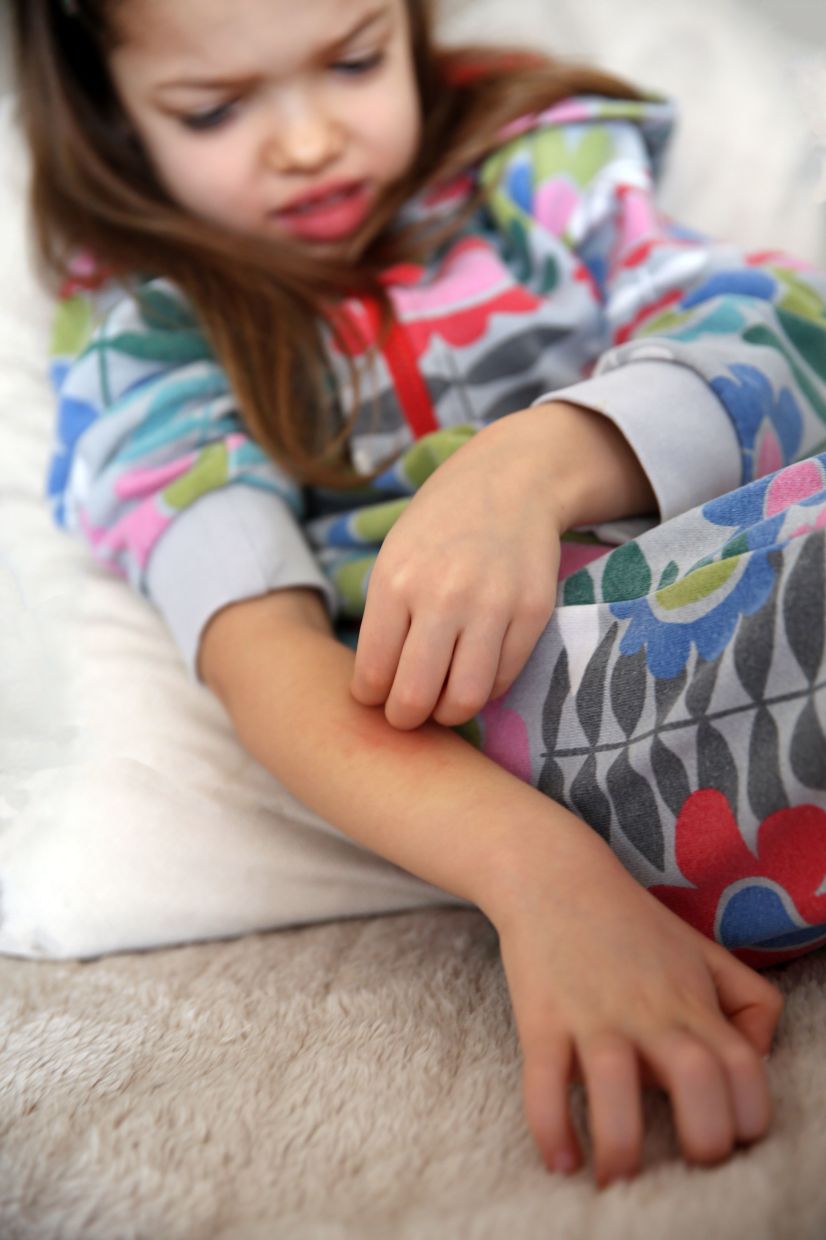Sometimes, the rash and its cause need to be treated, while other times, bed rest may be enough. — Photos: dpa
Many common childhood illnesses are accompanied by pustules, red spots or wheals.
But not all skin rashes are treated the same way.
Here's what parents need to know.
If your young child develops a rash, a likely cause is a common childhood illness.
The child should be examined by a doctor for a diagnosis and treatment, of course, but here's how to tell the difference between scarlet fever, chickenpox, fifth disease, three-day fever and measles rashes.
Scarlet fever starts with a red, bumpy rash around the armpits and groin.
The small bumps, about the size of a millet seed or pinhead, spread over the entire body with the exception of the area around the chin and mouth.
"The rash has a velvety appearance, but doesn't itch," says Jakob Maske, spokesman for the Cologne-based Professional Association of Paediatricians (BVKJ) in Germany.
Unlike rashes caused by measles or rubella, a scarlet fever rash blanches when pressed.
It fades completely after one to three weeks, and then the skin peels.
"Scarlet fever is often accompanied by a sore throat and fever," says paediatrician Dr Hermann Josef Kahl.
Highly contagious, it's caused by Group A Streptococcus bacteria.
Infected children are prescribed an antibiotic.
A highly contagious viral infection, chickenpox is characterised by a very itchy rash.
Bright red bumps called papules appear on the head and torso, spread, then become fluid-filled blisters.
"They can also develop on the scalp and mucous membranes," Dr Kahl says.
The blisters are the size of lentils and burst after several days, becoming scabs and eventually falling off.
The rash can simultaneously have various forms: bumps, blisters and spots – sometimes described as a "starry-sky" pattern.
"A lotion applied to the skin helps relieve the itching, which can be intense," Maske says.
Typical of fifth disease is a spotty rash that initially spreads butterfly-like across both cheeks, and sometimes, the nose as well.
It's also called slapped cheek syndrome.
The rash can also spread to the arms and legs, and is often itchy.
The spots later fade, becoming pale red ringlets. After a while, they disappear.
"This viral illness is frequently accompanied by a fever and cold symptoms," says Dr Kahl, in which case best rest is advisable.
Calf compresses or suppositories can help lower fever.
As a rule, the rash caused by fifth disease needn't be treated.
"The therapy here is to simply wait," Maske says.
Once the rash has healed, the often rough and flaky skin requires several weeks of intensive care.
"Oil baths and rich lotions help," he says.
Known medically as roseola infantum, it starts with a fever lasting up to four days that then subsides more or less abruptly.
The fever is followed by a pink-red rash on the chest, tummy and back that can quickly spread to the arms, legs, and even face.
"The rash is seldom itchy," says Dr Kahl, adding that it usually fades away after two or three days.
No special treatment is necessary.
Here too, suppositories and lukewarm calf compresses can help lower fever.
As fever causes young children in particular to sweat heavily, it's important that they drink plenty of fluids.
Measles is a highly contagious viral illness whose symptoms typically appear in two stages.
In the first stage, children have flu-like symptoms such as fever, runny nose, cough and sore throat.
"Small white spots later appear on the mucous membrane of the mouth," Maske says.
The fever increases and the oral mucosa reddens.
After several days, the fever drops and the second stage starts with a rash.
The fever rises again and the flu-like symptoms intensify.
The rash has the appearance of small, bright red spots.
"It begins behind the ears and then spreads from the face to the entire body," Dr Kahl says.
The spots later turn brownish or purple, and fade away after seven days at the latest. The skin then peels.
Bed rest is the recommended treatment, and parents should consult a doctor on the use of fever-reducing medications.
Although measles normally runs its course without further problems, complications are possible, including febrile seizures, difficulty breathing and consciousness disorders.
Parents who suspect their child has measles should therefore take him or her to a doctor.
A measles vaccination is highly effective at preventing the illness.
The vaccine is typically given in a two-dose series. – By Sabine Meuter/dpa






